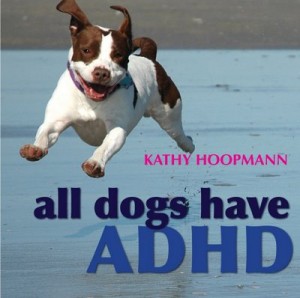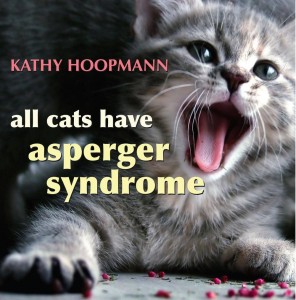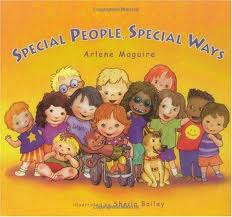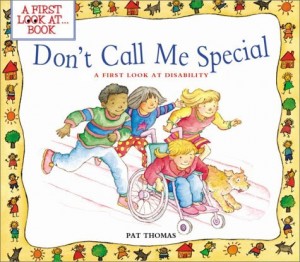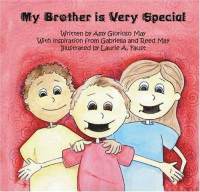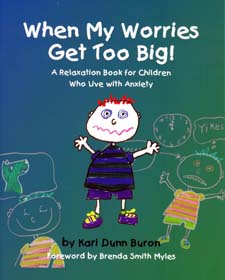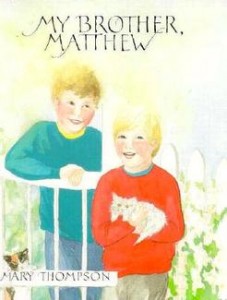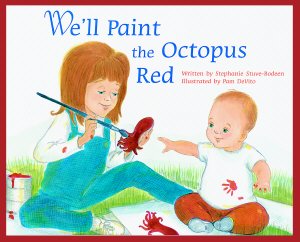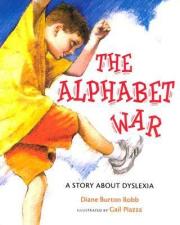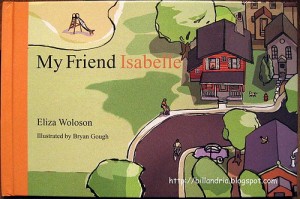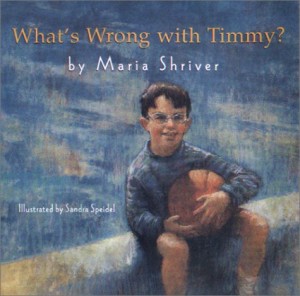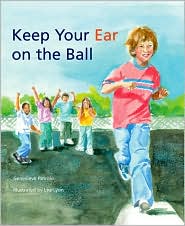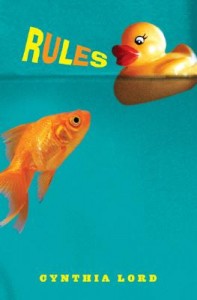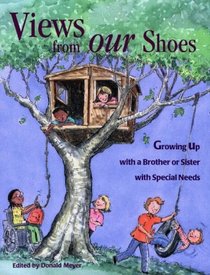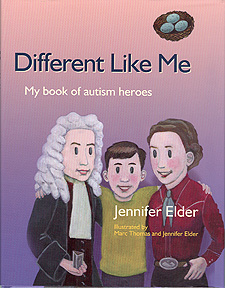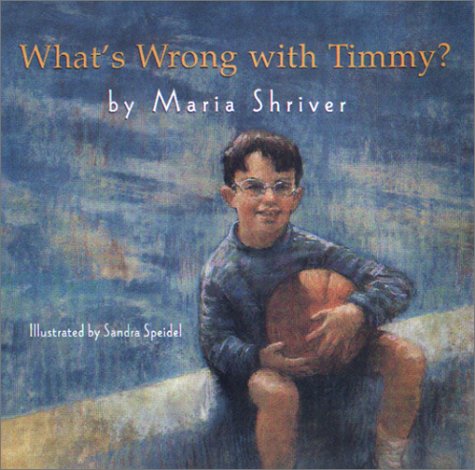
Products
by Kathy Hoopmann
All Dogs Have ADHD takes an inspiring and affectionate look at Attention Deficit Hyperactivity Disorder (ADHD), using images and ideas from the canine world to explore a variety of traits that will be instantly recognizable to those who are familiar with ADHD. This delightful book combines humor with understanding to reflect the difficulties and joys of raising a child with ADHD and celebrates what it means to be considered 'different.'
by Kathy Hoopmann
All Cats Have Asperger Syndrome takes a playful look at Asperger Syndrome (AS), drawing inspiration from the feline world in a way that will strike a chord with all those who are familiar with AS. Delightful color photographs of cats bring to life familiar characteristics such as sensitive hearing, scampering at the first sign of being stroked and particular eating habits. This engaging book is an ideal, gentle introduction to the world of AS.
by Arlene Maguire
Delightful rhymes combined with rich watercolor illustrations take the reader on a journey of discovery. Each page portrays positive images of children with various disabilities. Winner of an iParenting Media Award, this book illustrates that beyond our physical limitations is a world of unique gifts for each of us to share. Teachers and parents love to read this book aloud to promote understanding and tolerance at school and at home.
by Pat Thomas
This delightful picture book explores questions and concerns about physical disabilities in a simple and reassuring way. Younger children can find out about individual disabilities, special equipment that is available to help the disabled, and how people of all ages can deal with disabilities and live happy and full lives.
by Amy May
This story is about a little boy, Reed, who is very different than most little children. Reed has a severe speech disorder, Apraxia, which leaves him almost completely unintelligible to his peers. This story is told from the viewpoint of his older sister, as she is well aware of his challenges and his triumphs. Instead of exclusively focusing on what Reed is unable to do, this story portrays the many things he can do with his peers, in spite of his inability to speak to them.
by Kari Dunn Buron
The thought of losing control can cause major problems for children who live with anxiety. Now, parents, teachers and children have a helpful tool that gives young children an opportunity to explore their own feelings with parents or teachers as they react to events in their daily lives.
Engaging and easy to read, this illustrated children s book is filled with opportunities for children to participate in developing their own self-calming strategies. Children who use the simple strategies in this charming book, illustrated by the author, will find themselves relaxed and ready to focus on work or play!
by Mary Thompson
A book especially for siblings. My Brother, Matthew is narrated by a young boy who describes the ups and downs of day-to-day life as he and his family adjust to his new brother, Matthew, who is born with a disability.
David, the older siblings, wryly shares his experiences -- the worry, impatience, feeling left out, being talked down to my grownups -- and the positive ways in which he has built a unique relationship with his brother. Fully illustrated and sensitively written, this is a story that can help other siblings share their feelings and reassure them that their role in the family is very important.
by Stephanie Stuve-Bodeen
As six-year-old Emma anticipates the birth of her new baby brother or sister, she vividly imagines all of the things they can do together. Emma feels ready to be a big sister! Then when the baby is born, her dad tells her that it's a boy and he has something called Down syndrome. Finally she asks, "If Isaac has this Down thing, then what can't he do?". Her dad thinks about it, then tells her that as long as they are patient with him, and help him when he needs it, there probably isn't anything Isaac can't do.
In this touching story, Emma helps her father as much as he helps her to realise that Isaac is the baby they dreamed of. The book concludes with a set of commonly asked questions about Down syndrome with answers for children and how it might affect their sibling and family. For ages 3-7.
by Diane Burton Robb
Adam starts school, and although he loves stories, he can't seem to get the words to make sense. Over the next few years, he slowly despairs of ever learning to read. Instead, he imagines that he is being held captive by an evil king who torments him with vowels. His parents hire tutors to help, but it isn't until a specialist comes in at the beginning of third grade and diagnoses him as dyslexic that things start to look up.
For Adam, it has become a much bigger problem than just learning how to read-he must also find the self-confidence that years of failure have robbed from him. His new teacher helps him see that reading will always be hard for him, but that it is possible. The pastel illustrations adequately convey Adam's emotions. Although the text often tells rather than shows the boy's plight, the subject matter is handled with respect for his feelings at every stage of the process, and does not oversimplify or sugarcoat the difficulties of dyslexia.
by Eliza Woloson
Isabelle and Charlie are friends. They both like to draw, dance, read, and play at the park. They both like to eat Cheerios. They both cry if their feelings are hurt. And, like most friends, they are also different from each other. Isabelle has Down syndrome. Charlie doesn't. Written by Isabelle's mother, this charming tale encourages readers to think about what makes a friendship special. My Friend Isabelle also opens the door for young children to talk about differences and the world around them. It's a wonderful story to read at bedtime or to share at school. Lively full color illustrations dovetail beautifully with the text to bring the simple story to life.
by Maria Shriver
When 8-year-old Kate meets a boy who seems somehow different, she feels funny inside. After talking with her mom, though, Kate begins to understand that Timmy is just like her in many ways. Timmy has special needs; he takes longer to learn than Kate, and can't walk or run as well. But he also "loves his family, he wants friends, he goes to school, and he dreams about what he wants to be when he grows up." Kate and Timmy meet, and the seeds of a friendship are planted.
For all those children who ask their parents why someone looks or acts "different," author and journalist Maria Shriver's What's Wrong with Timmy? provides a base for discussion. Kate's mother models appropriate behavior, speaking to her daughter calmly and directly, and providing examples from her own life to help Kate understand about Timmy.
by Genevieve Petrillo
Everybody wants to help Davey. "Let me open that." "Do you want to hold my hand?" Davey has one answer for all, "Thanks, but no thanks." Davey is blind--and he is perfectly capable of doing everything on his own. His well- meaning classmates stop offering help when they see how able Davey is. They respect his self-reliance--until he tries to play kickball. After several missed kicks and a trampled base keeper, no one wants Davey on his team. Working together, the children figure out a way to offer help that respects Davey's unique abilities and his desire for freedom. In this seamless tale, based on a true story, the children realize that interdependence can be just as important and rewarding as independence.
by Cynthia Lord
Twelve-year-old Catherine just wants a normal life. Which is near impossible when you have a brother with autism and a family that revolves around his disability. She's spent years trying to teach David the rules from "a peach is not a funny-looking apple" to "keep your pants on in public"---in order to head off David's embarrassing behaviors.
But the summer Catherine meets Jason, a surprising, new sort-of friend, and Kristi, the next-door friend she's always wished for, it's her own shocking behavior that turns everything upside down and forces her to ask: What is normal?
by Donald Joseph Meyer
In Views From Our Shoes, 45 siblings share their experiences as the brother or sister of someone with a disability. The children whose essays are featured here range from four to eighteen and are the siblings of youngsters with a variety of special needs, including autism, cerebral palsy, developmental delays, ADD, hydrocephalus, visual and hearing impairments, Down and Tourette syndromes. Their personal tales introduce young siblings to others like them, perhaps for the first time, and allow them to compare experiences.
by Jennifer Elder
Different Like Me introduces children aged 8 to 12 years to famous, inspirational figures from the world of science, art, math, literature, philosophy and comedy. Eight-year-old Quinn, a young boy with Asperger's Syndrome, tells young readers about the achievements and characteristics of his autism heroes, from Albert Einstein, Dian Fossey and Wassily Kandinsky to Lewis Carroll, Benjamin Banneker and Julia Bowman Robinson, among others. All excel in different fields, but are united by the fact that they often found it difficult to fit in-just like Quinn.
Fully illustrated in color and written in child-friendly language, this book will be a wonderful resource for children, particularly children with autism, their parents, teachers, carers and siblings.
Explaining special needs to your child: 15 great children’s books
Has your child ever asked you why Jeff can't talk, why Olivia can't walk, why does Jeremy wave his hands? Are you at a loss about how to explain special needs to your child? Here are 15 great books that you can read to your child or classroom that will help explain special needs to children. If you have any suggestions please share! Comment below. Also: Check out these great posts from the special needs book and video series- 12 amazing special needs stories you need to read!
- Does Hollywood get it right? 11 Special needs movies to watch
- 12 special needs novels that will touch your heart
- The top 15 Special Needs Documentaries
- Explaining special needs to your child 15 great children's books


